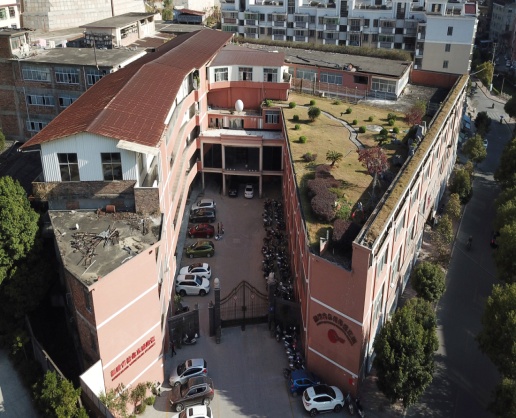
There are many customer will visit our factory before place order. In order to confirm the strength and environment of the factory. Below I will introduce our factory for customers who are coming to visit or who are unable to come to visit.
We are Fujian Province Dehua Dongsheng Ceramic Co.,LTD. We are ceramic factory in China. We was founded in 1999. Our main manufacturing scope is Daily Ceramics and Ceramic Decoration. We have a strong sample department. Customized services can be accepted.
Method 1: Take a flight to Quanzhou Jinjiang Airport. Then we will arrange car to pick you to our factory. Quanzhou Airport is 114 kilometers from the factory.
Method 2: Take a flight to Xiamen Gaoqi Airport. Then we will arrange car to pick you to our factory. Xiamen Airport is 135 kilometers from the factory.
Method 1: Take CRH Train To Xiamen CRH Station. Then we will arrange car to pick you to our factory. Xiamen CRH Station is 116 kilometers from the factory.
Method 2: Take CRH Train To Quanzhou CRH Station. Then Take C880 To DEHUA Station. Then we will arrange car to pick you to our factory.
Our ceramic Factory are now have over 20 management employees and 200 production workers, covering a production area of 20,000 square meters. There are four floors in total.

The area on the left is the office area. The one in the middle and behind is the production workshop. On the right is the area where samples are placed. There are customer designs and ceramic styles we design every spring and autumn.
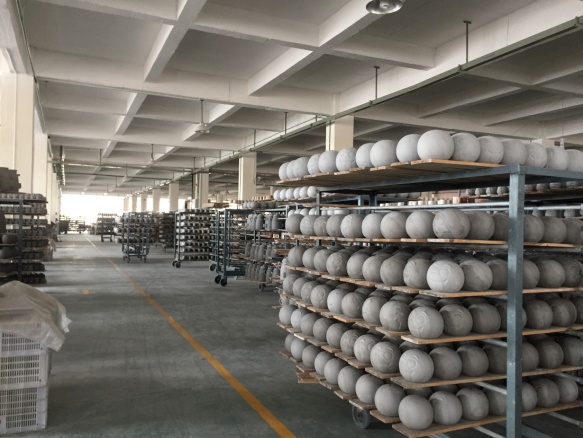
Drying time for a ceramic clay body can vary widely based on several factors, but understanding this process is crucial for achieving the best results in ceramic art. Here are some key points to consider:
Type of Clay: Different types of clay, such as earthenware, stoneware, or porcelain, have different properties that affect drying time. Porcelain, for instance, tends to dry slower than earthenware due to its finer particle size.
Thickness of the Piece: Thicker pieces of clay take longer to dry because the moisture has more material to travel through before evaporating.
Ambient Conditions: Humidity, temperature, and airflow in the drying environment play significant roles. High humidity can slow down the drying process, while a warm environment with good airflow can speed it up.
Stages of Drying:
Leather hard: This is the stage when the clay is dry enough to handle without deforming but still moist enough to be carved or joined to other pieces.
Bone dry: The clay is completely air-dried and feels room temperature to the touch. It's ready for bisque firing but is very fragile at this stage.
Time Frame: Depending on the factors above, drying can take anywhere from a few hours for small, thin pieces in ideal drying conditions to several weeks for large, thick pieces in more humid or cooler conditions.
Ceramic Clay Body Area is ventilated from both sides. Managing these factors effectively ensures that the ceramic pieces dry uniformly and are less prone to damage before firing. Always monitor the drying process and adjust environmental conditions to maintain the best drying rate for your specific clay body and project size.

There are 3 Kiln In our Factory. We can produce three production lines at the same time. Ceramic production reaches 400,000 pieces/month.
A ceramic electric kiln is a type of kiln powered by electricity, making it one of the most common and accessible kilns for both amateur and professional ceramists. Here's an introduction to ceramic electric kilns:
Consistency and Control: Electric kilns provide precise control over the temperature, which can be easily adjusted through electronic controllers. This allows for consistent results and the ability to repeat specific firing cycles.
Clean and Convenient: Electric kilns produce no combustion by-products, which means they can be used indoors without the need for extensive ventilation systems that are necessary with gas kilns.
Versatility: Suitable for a variety of ceramic processes including bisque firing, glaze firing, and other decorative firing techniques.
Structure: Typically, electric kilns are cylindrical and lined with heat-resistant insulating bricks or ceramic fiber. These materials help to maintain high temperatures efficiently.
Heating Elements: The kiln heats up through coils of high-temperature resistance wire that are typically made from materials like Kanthal. These elements are wound throughout the kiln and heat the interior uniformly.
Controllers: Modern electric kilns come equipped with digital controllers that allow the user to set specific programs for firing cycles. These can include ramps (rate of temperature increase), holds (sustaining a specific temperature), and cooling cycles.
Electricity Consumption: Operating an electric kiln requires a significant amount of electrical power, especially at higher temperatures. This can be a consideration in terms of energy costs and the electrical infrastructure of the building.
Packaging worker pack the products as per the customer's requirements . After packaging, place the boxes in the warehouse.
Our ceramic factory has no products in stock. These are customer products that are stored in this finished product warehouse after being packaged and awaiting shipment.

A ceramic roll mold machine, often referred to as a roller jigger or jigger machine, is a piece of equipment used in the ceramics industry to produce consistent and uniform ceramic ware. This machine is particularly useful in large-scale production settings, allowing for the efficient manufacturing of items like plates, bowls, and other hollow ware.
Principle: The ceramic roll mold machine operates by using a rotating mold on which a slab of clay is formed into a shape. As the mold rotates, a highly textured roller presses against the clay, imprinting it with a specific design or texture. The combination of rotation and pressure ensures uniform thickness and shape across the produced items.
Components: Typically, the machine consists of a rotating platen that holds the mold, a roller that applies pressure, and a system for feeding clay consistently into the machine. Advanced machines may also include automated systems for trimming and removing excess clay.
Consistency: The machine produces items that are highly consistent in terms of size, shape, and texture, which is crucial for commercial production.
Efficiency: It significantly speeds up the production process compared to hand-throwing or manually pressing clay into molds. This efficiency is vital in reducing labor costs and increasing output.
Versatility: Different molds and rollers can be used to create a variety of designs. This allows manufacturers to easily switch between different product lines without extensive downtime.
Applications
Tableware Production: Ideal for creating uniform dishes, cups, and bowls, especially for the hospitality industry.
Decorative Items: Can be used to produce decorative ceramic products that require uniformity, such as vases and pots.
Architectural Elements: Sometimes used for making consistent architectural ceramics, such as tiles or facade elements.
Regular Maintenance: Like all industrial machinery, a ceramic roll mold machine requires regular maintenance to ensure it continues to operate smoothly. This includes checking mechanical parts for wear, ensuring rollers and molds are clean and free of debris, and maintaining any electronic controls.
Skill Requirement: Although the machine automates much of the production process, skilled operators are still needed to set up, monitor, and adjust the machine as necessary to maintain quality.
The Roll Mold will expensive than normal mold. We will recommend to customers whether to use roll mold based on ceramic material, product type and cost.
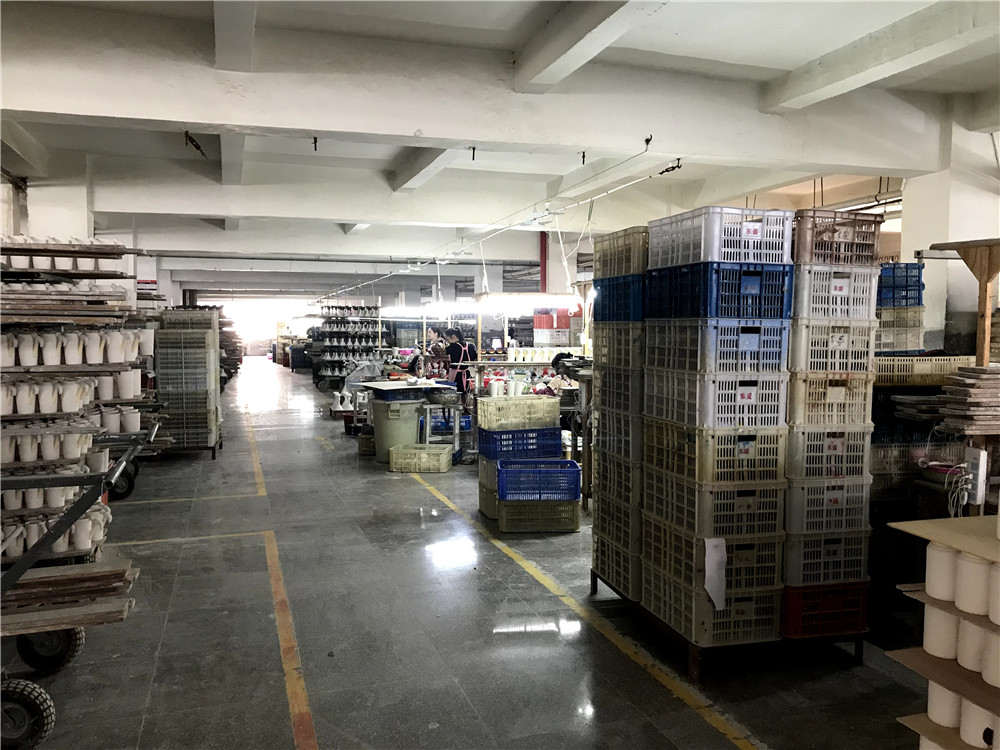
Hand-painted ceramics are very popular with foreign customers. This area is hand-painted with the fired bisque.
Hand-painted ceramics are a beautiful and traditional art form that involves decorating ceramic items by hand with special paints and brushes. This craft blends artistic expression with the practical functionality of ceramic ware, offering both aesthetic pleasure and utility. Here's an introduction to hand-painted ceramics:
Underglaze Painting: This involves applying colored decorations to greenware (unfired clay) which is then covered by a transparent glaze and fired, allowing the colors to show through brilliantly.
Overglaze Painting: This technique is used on already glazed and fired ceramics. The paint is applied on the glaze and the piece is fired again at a lower temperature to fix the paint onto the glaze.
Glazes: Special ceramic glazes that can blend with the colors, enhancing durability and appearance. These glazes are often applied after the painting process to seal and protect the artwork.
Traditional Motifs: Many cultures have specific motifs and patterns that are traditionally used in ceramic painting, such as the intricate blue and white designs of Chinese porcelain or the vibrant, colorful patterns of Talavera from Mexico.
Modern Designs: Contemporary artists often experiment with abstract designs, personal symbols, or even narrative scenes, expanding the possibilities of ceramic decoration.
Preparation: The ceramic piece is shaped and bisque-fired (a first firing process to harden the clay).
Design Planning: The artist sketches the design either directly on the bisqueware or on paper as a reference.
Painting: Special ceramic paints or underglazes are used to hand-paint the design onto the piece. This requires a steady hand and a good eye for detail.
Glazing and Firing: After painting, the piece is usually glazed and fired again. The firing process is crucial as it sets the paint and glaze, making the design permanent and the ware usable.
Functional Ware: Hand-painted ceramics include plates, bowls, mugs, and other kitchenware that are both functional and decorative.
Artistic Pieces: Many ceramic artists create non-functional artwork intended for display. These pieces often feature more intricate and detailed designs.
Cultural Artifacts: In many cultures, hand-painted ceramics hold cultural significance and are used in rituals, celebrations, or as traditional home decorations.
Skill and Patience: Hand painting on ceramics requires a high level of skill and a lot of patience, as the process is meticulous and can be quite time-consuming.
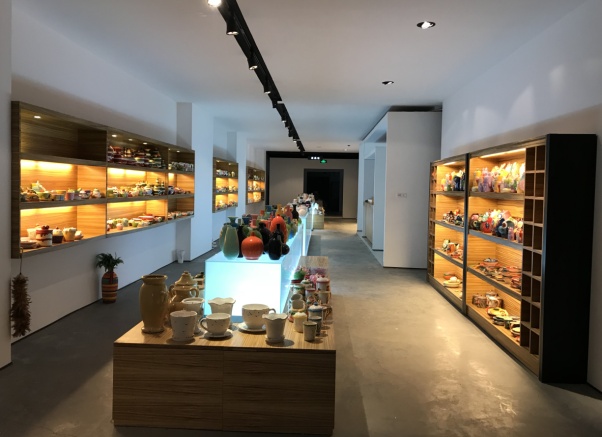
Samples are available with over 10000 pieces of different designs. Most of the customers who visit spend the longest time here. Find a design you are satisfied with.

The color of the picture may differ from the actual color. So we mixed the colors based on Pantone numbers. Our professional colorists can guarantee more than 95% similarity.
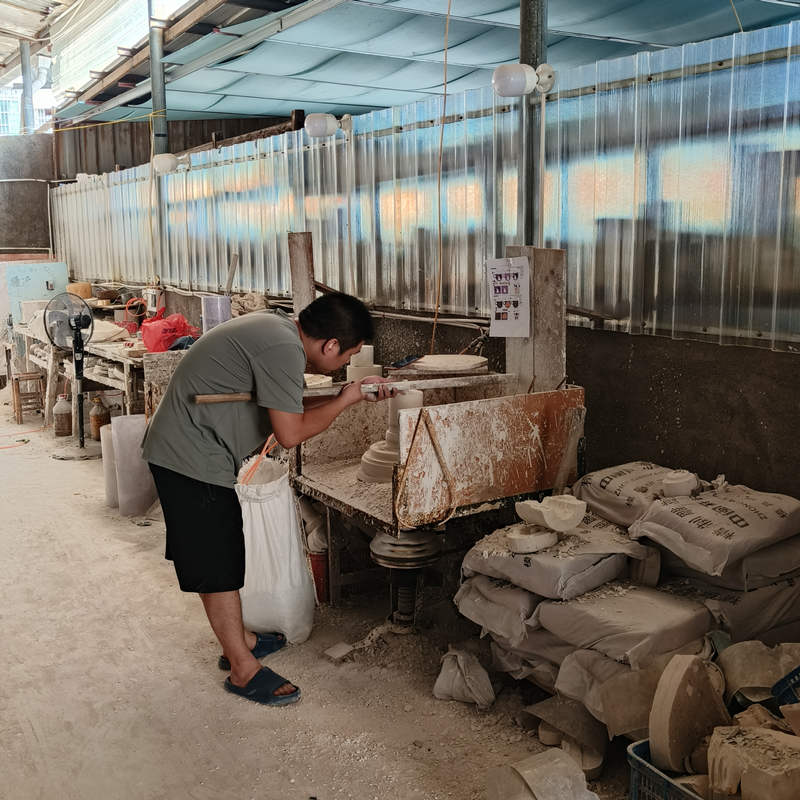
Ceramic molds include handmade sculptures and 3D printed sculptures. 3D printing is expensive. 3d modeling is required. A traditional sculptor can often meet a client's request.
2024-07-19
2024-07-19
2024-07-04
2024-07-04
2024-06-13
2024-06-12
2024-05-30
2024-05-30